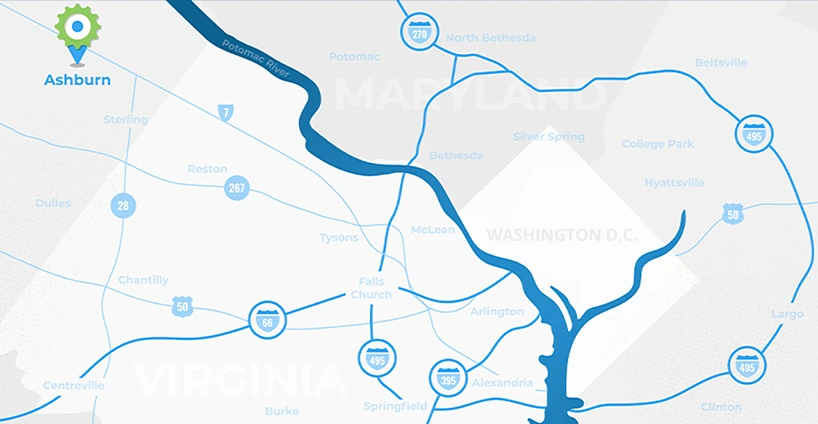A Complete Guide to Hashtags on Twitter: History, Use, & Best Practices

Hashtags are such an integral part of social media. It’s surprising when you realize giants like Twitter and Instagram launched without this function. The simple pound symbol has changed how we communicate online and is a natural part of the social Internet’s language.
A hashtag is great because it’s simple to use, and it’s tricky because it’s simple to misuse. That’s why we’re going back to Internet basics and examining how to use hashtags to their best effect. Today, we’re starting with Twitter.
A Brief History of Hashtags on Twitter
Hashtags were first introduced on Aug 23, 2007, by Chris Messina. At first, he thought it would be a nifty way for folks to follow specific groups. The pound sign was already in use in other chatty tech forums, so perhaps Twitter could find it useful as well. The general opinion at the time was, “that’s dumb.”
However, when the 2007 San Diego wildfires broke out, Twitter users began using hashtags to search for information and updates on the situation. Then, in 2008, conservationists utilized hashtags to increase public awareness and urge the US congress to pass an energy bill. Now, over a decade later the hashtag is a ubiquitous symbol that comes naturally to users of the social internet.
Handpicked content: How Much Does a Custom Website Cost in 2021?
The Benefits of Using Hashtags on Twitter
Hashtags create a link between your tweet and a world of users interested in that subject. It gives your tweet context and can increase engagement by almost 50% for brands on Twitter. A well used hashtag on a well timed tweet can be the difference between only a handful of your followers seeing a piece of content or a major announcement, and all your followers and then some seeing and engaging with it.
How to Create Hashtags on Twitter
Add a pound (#) symbol to the beginning of a word or unbroken phrase to create a hashtag. Do not use spaces or special characters like apostrophes (‘) or ampersands (&).
So, note to the grammar nerd on your team: grammar depends on context, and phrases like #ItsComingHome are grammatically correct in the context of a hashtag. Take a quick look at #It’sComingHome and you’ll see how punctuation can completely change the audience for your tweet (causing it to flop).
Lastly, it’s a simple thing, but make sure your account is public. Private tweets will allow your followers to click on the hashtag to see more tweets about that topic. However, you won’t receive any benefits of reaching new accounts via the hashtag because your private account won’t appear to non-followers in search.
How to Use Hashtags on Twitter
So, that’s how you make hashtags, but how should you actually use them so you can experience the benefits we wrote about two sections ago? Generally, use hashtags on Twitter to categorize your content. Chris Messina, the hashtag creator, once put it that he was, “more interested in simply having a better eavesdropping experience on Twitter.”
You can also promote hashtags outside of Twitter, encouraging people to drum up buzz through their own tweets. If you provide consumer goods, print your hashtag on your packaging or paper materials. If you’re running an event like a business conference, create a unique hashtag for attendees to connect.
Handpicked content: How To Find a Website Designer? 2025 Guide
Best Practices for Twitter Hashtags
- Use 1-2 hashtags per tweet. It’s true, hashtags extend the reach of your tweet. However, they still count towards your character limit. The more hashtags you add, the less value your original message can provide. Bonus tip: Don’t use ANY in Twitter ads for a more seamless appearance and generating 23% more clicks, according to Twitter.
- Use Capital or Camel Case for multi-phrase hashtags. #MakeAWish and #makeawish will point users to the same search, but one is much easier to read.
- Keep it short. Shorter tags are easier to remember, incorporate in your copy, and spell. Seriously, one misplaced letter and your tweet is undiscoverable (and looks a little ameteur).
- Research the hashtag before posting. There is this practice known as trend jacking, where brands hi-jack trending topics for their own promotion. Everyone wants to be the genius that came up with Oreo’s “You can still dunk in the dark'' moment during the 2013 Super Bowl blackout. However, if your thinking is a little too quick, you end up being DiGiorno, the the frozen pizza company that suggested someone would endure an abusive relationship because their abuser provided them good frozen pizza when the brand misused #WhyIStayed. #Yikes
- Give people a reason to use your hashtag. Twitter users don’t use hashtags because they’re there, they use them because they’re useful. They facilitate a larger conversation by connecting people to subjects and current or exclusive events. Use them to create community.
Hashtags on Twitter have gone from a weird suggestion to something incredibly vital in the spread of information online. 14 years of experimentation and we’ve collectively come up with some of the best ways to use hashtags for the current social internet.
On Twitter, the bottom line of hashtags is they should be used to categorize your content to make it easier for interested folks to find valuable information and to add their own value to the conversation. With that idea laying the foundation, go forth and create your own Twitter hashtag strategy.
By Jordan Latham
- - -
By the way, this post is the first in a series, where we’ll explore how hashtags work on different social media platforms. Be sure to subscribe to the ImageWorks Creative Blog near the top of this article so you don’t miss out!





